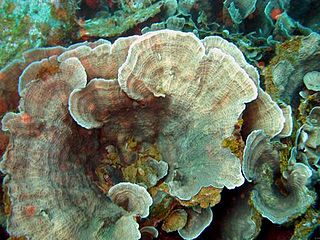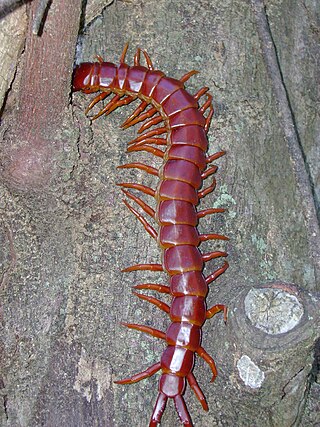
Calliandra is a genus of flowering plants in the pea family, Fabaceae, in the mimosoid clade of the subfamily Caesalpinioideae. It contains about 140 species that are native to tropical and subtropical regions of the Americas.

T wave alternans (TWA) is a periodic beat-to-beat variation in the amplitude or shape of the T wave in an electrocardiogram TWA was first described in 1908. At that time, only large variations could be detected. Those large TWAs were associated with increased susceptibility to lethal ventricular tachycardias.

Electrical alternans is an electrocardiographic phenomenon of alternation of QRS complex amplitude or axis between beats and a possible wandering base-line. It is seen in cardiac tamponade and severe pericardial effusion and is thought to be related to changes in the ventricular electrical axis due to fluid in the pericardium, as the heart essentially wobbles in the fluid filled pericardial sac.

Pulsus alternans is a physical finding with arterial pulse waveform showing alternating strong and weak beats. It is almost always indicative of left ventricular systolic impairment, and carries a poor prognosis.
Grandisonia alternans is a species of caecilian in the family Indotyphlidae, endemic to the Seychelles islands of Mahé, Praslin, Frégate, and La Digue.

Omorgus alternans is a beetle of the family Trogidae found in Australia.
Euxesta alternans is a species of ulidiid or picture-winged fly in the genus Euxesta of the family Ulidiidae.

Kessleria is a genus of moths of the family Yponomeutidae.
Calosoma alternans is a species of ground beetle in the family Carabidae. It is found in Central and South America.

Mecaspis is a genus of cylindrical weevils belonging to the family Curculionidae. This genus is present in most of Europe, in the East Palearctic realm, in the Near East and in North Africa.

Sybra alternans is a species of beetle in the family Cerambycidae. It was described by Wiedemann in 1823. It is known from Myanmar, Thailand, Laos, Cambodia, Vietnam, Malaysia, Taiwan, Indonesia, Mariana Islands, Caroline Islands, Marshall Islands, and the Philippines. It was introduced in Hawaii in 1917, as well as Florida. Its diet includes plants such as Ananas comosus, Canavalia ensiformis, Musa × paradisiaca, Ocimum basilicum, Phaseolus vulgaris, Pittosporum tobira, Vachellia farnesiana, and Xanthium strumarium.
Melanothrix alternans is a moth in the family Eupterotidae. It was described by Pagenstecher in 1890. It is found in the Philippines (Palawan) and on Borneo. The habitat consists of hill dipterocarp forests and wet heath forests.
Bigeminal pulse is a medical condition, easily confused with pulsus alternans. Similar features between bigeminal pulse and pulsus alternans are strong peak and weak peak. However, unlike pulsus alternans, the weak beat in bigeminal pulse occurs prematurely (early). Thus, not followed a pause as it is in pulsus alternans but occurs close to normal strong beat.
Cryptocephalus alternans is a species of case-bearing leaf beetle in the family Chrysomelidae. It is found in the Middle America (Mexico) and the Southwestern United States.
Anorostoma alternans is a species of fly in the family Heleomyzidae. The species was originally described by C.B.D. Garrett in 1925
Egira alternans, the alternate woodling, is a species of cutworm or dart moth in the family Noctuidae. It is found in North America.
Anisodactylus alternans is a species of ground beetle in the family Carabidae. It is found in North America.

Physocarpus alternans also known as dwarf ninebark and Nevada ninebark is a flowering shrub native to east California, currently found throughout Western North America. It was first described by J.T.Howell in 1931. It prefers growing on dry, rocky slopes, grows in pinyon and juniper shrublands, also found near limestone outcrops. It has been found to grown at elevations of 1800 to 3100 m above sea level. Aside from the native California specimens have been collected in Nevada, Utah, Idaho and Colorado. It flowers in June and July, producing small, white flowers.

Leptoseris is a genus of corals belonging to the family Agariciidae.

Scolopendra alternans, commonly known as the Haitian giant centipede, Caribbean giant centipede, and Florida Keys centipede, is a species of large centipede in the subfamily Scolopendrinae. The species was involved in widespread news coverage after an incident in John Pennekamp Coral Reef State Park, in which a specimen of the extremely rare rim rock crown snake died of asphyxiation while trying to eat a Scolopendra alternans, which also died.











